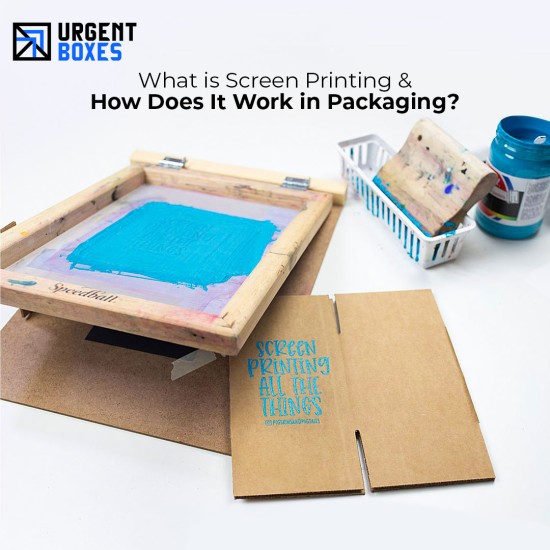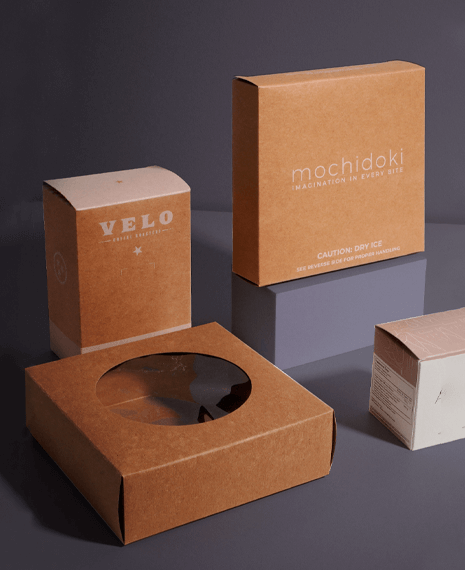Screen printing is a top choice in today's competitive packaging world, where branding and looks matter. It's a flexible and reliable printing method for labels, boxes, bottles and bags. This printing method has existed for decades. It is known for its bright colors, textured feel and long-lasting results. Screen printing makes packaging both attractive and visually appealing. This blog breaks down what screen printing is, how it works, and how important it is in the packaging industry. Let's get started without any ado.
What is Screen Printing?
Screen printing also known as silk screen printing. It is a classic procedure of transferring a design onto a surface by pressing ink through a mesh screen. The screen acts as a stencil allowing inks to pass through certain areas creating the desired designs. The technique is incorporated on different surface including:
- Fabrics: T-shirts and hoodies.
- Paper: Posters, custom paper bags, and business cards.
- Plastic & Glass: Bottles, signage, and packaging boxes.
- Metal & Wood: Custom decor, signs, and plaques.
Exploring the History of Screen Printing
Screen printing has a long history. It started in China during the Song Dynasty (960–1279 AD). It reached Europe in the 1700s and became widely used by the 20th century. In the 1960s, pop artists like Andy Warhol helped make it popular in mainstream art. Screen printing gained popularity in packaging for its bold colors and durable prints on smooth surfaces.
How Screen Printing Works

The screen printing procedure follows some steps to ensure accuracy. Here is a brief version of 6 steps in the screen printing process:
1. Design Preparation:
The procedure begins with the creation of artwork. It creates and digitizes the design using software for accurate results. Each color in the design segregated into individual layers. For example, a three color design will need three different screens.
2. Screen Creation:
A mesh screen is coated with an emulsion. After drying, it is exposed to UV light. After that, the unexposed emulsion is washed away leaving the design on the screen.
3. Machine Setup:
A manual screen printing machine is used for small batches. In contrast, an automatic screen printing machine is used for higher volumes.
4. Printing Process:
This procedure includes pouring the ink into the screen and pushing through the utensils.
5. Drying and Curing:
The printed material is then dried using a heat press or conveyor dryer. It keeps the ink permanently attached to the surface.
6. Quality Check:
Finally, you can evaluate the product for any errors or imperfections.
Key Advantages of Screen Printing in Packaging
To understand this printing method better, let's examine its main advantages and drawbacks.
| Advantages |
Disadvantages |
| Produces bright and long-lasting prints |
Not perfect choice for small or one-time prints due to setup charges. |
| Works on many surfaces like fabric, glass, and cardboard |
Works on many surfaces like fabric, glass, and cardboard |
| Best for detailed and layered designs. |
Each color needs a separate screen, making multicolor prints more expensive. |
| More cost-effective for large batches |
Needs skilled operators for best results. |
| Prints stay sharp and high-quality over time. |
Includes chemicals that need proper handling to avoid environmental harm. |
Screen Printing Equipment
Several tools and machines are used to carry out screen printing effectively. Here is a quick look at the main equipment involves:
• Screen frames
Screen frames hold the mesh tightly in place. They come in different sizes. These are usually made of wood and aluminum.
• Mesh screens:
A fine mesh stretched across the frame where the stencil design is created. The count of mesh screens varies depending on the detail needed.
• Emulsion and coating tools:
Photosensitive emulsion is incorporated into the screen using a scoop coater to prepare it for exposure.
• Exposure unit:
It uses UV light to harden the emulsion on the screens producing the stencil of your design
• Squeegee:
It is a must have tool to push ink evenly through the mesh on the printing surface.
• Printing press:
Manual or automatic machines that hold the screen in place
• Ink:
Ink selection is based on the material such as water-based, plastisol or UV curable inks
• Drying equipment:
Heat pressed and flash dryers are used to set the inks
• Cleaning station:
They are used for washing and reclaiming screens for reuse- includes washout booths, sprays and reclaiming chemicals.
Popular Packaging Applications for Screen Printing
Here are the standard packaging applications for screen printing:
- Cosmetic and skincare containers
- Luxury rigid boxes
- Shopping and tote bags
- Beverage bottles and jars
- Electronic product packaging
- Custom gift boxes
- Food-grade pouches and wrappers
Future Trends: Screen Printing and Sustainable Packaging
As eco-friendly packaging becomes popular, screen printing is going green with eco-friendly inks and biodegradable materials. Manufacturers are also using energy saving dryers to reduce their environmental impact. Incorporating screen printing with digital methods is also on the rise. It offers more flexible, high-end, and less wasteful results.
Final Thoughts
Screen printing is a versatile, budget-friendly and creative printing method. It produces bold colors, unique textures, and durable designs. That's why; it is excellent for brands that want to stand out in the competitive market. Digital printing is the quickest solution for small jobs, but screen printing is best for high-quality packaging. Screen printing is your ultimate option if you want long-lasting and sophisticated packaging to outshine your brand.





